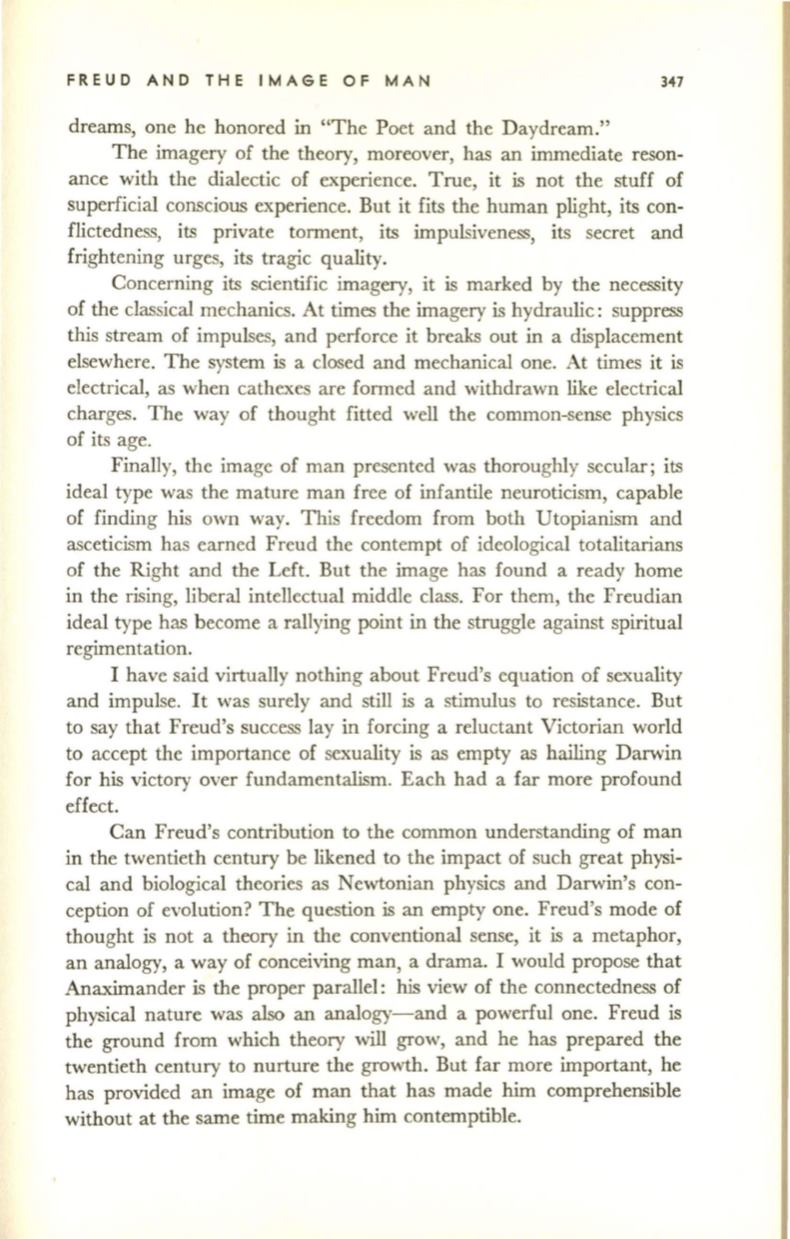
FREUD AND THE IMAGE OF MAN
347
dreams, one he honored in "The Poet and the Daydream."
The imagery of the theory, moreover, has an immediate reson–
ance with the dialectic of experience. True, it is not the stuff of
superficial conscious experience. But it fits the human plight, its con–
flictedness, its private torment, its impulsiveness, its secret and
frightening urges, its tragic quality.
Concerning its scientific imagery, it is marked by the necessity
of the classical mechanics. At times the imagery is hydraulic: suppress
this stream of impulses, and perforce it breaks out in a displacement
elsewhere. The system is a closed and mechanical one. At times it is
electrical, as when cathexes are formed and withdrawn like electrical
charges. The way of thought fitted well the common-sense physics
of its age.
Finally, the image of man presented was thoroughly secular; its
ideal type was the mature man free of infantile neuroticism, capable
of finding his own way. This freedom from both Utopianism and
asceticism has earned Freud the contempt of ideological totalitarians
of the Right and the Left. But the image has found a ready home
in the rising, liberal intellectual middle class. For them, the Freudian
ideal type has become a rallying point in the struggle against spiritual
regimentation.
I have said virtually nothing about Freud's equation of sexuality
and impulse. It was surely and still is a stimulus to resistance. But
to say that Freud's success lay in forcing a reluctant Victorian world
to accept the importance of sexuality is as empty as hailing Darwin
for his victory over fundamentalism. Each had a far more profound
effect.
Can Freud's contribution to the common understanding of man
in the twentieth century be likened to the impact of such great physi–
cal and biological theories as Newtonian physics and Darwin's con–
ception of evolution? The question is an empty one. Freud's mode of
thought is not a theory in the conventional sense, it is a metaphor,
an analogy, a way of conceiving man, a drama. I would propose that
Anaximander
is
the proper parallel:
his
view of the connectedness of
physical nature was also an analogy-and a powerful one. Freud is
the ground from which theory will grow, and he has prepared the
twentieth century to nurture the growth. But far more important, he
has provided an image of man that has made him comprehensible
without at the same time making him contemptible.


